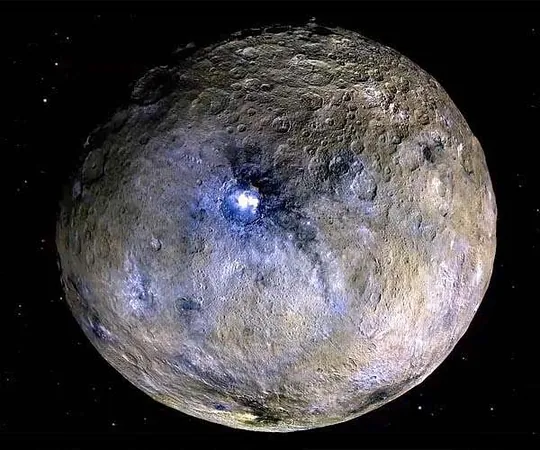
Ceres: The Ocean World of Our Solar System That Could Unlock Secrets of Icy Moons
2024-09-29
Ceres: The Ocean World of Our Solar System That Could Unlock Secrets of Icy Moons
Recent research has unveiled a fascinating new perspective about Ceres, the largest object in the asteroid belt, originally discovered in 1801 by astronomer Giuseppe Piazzi. For decades, scientists have scrutinized Ceres' heavily cratered surface, long believing that its visible impact craters indicated a relatively dry composition. However, groundbreaking research from Purdue University and NASA's Jet Propulsion Laboratory (JPL) suggests that Ceres might have once been a watery ocean world, now hidden beneath a thick, icy crust.
Led by PhD student Ian Pamerleau and Mike Sori, an assistant professor in Earth, Atmospheric, and Planetary Sciences at Purdue, this team has published their findings in Nature Astronomy. Their study involved advanced computer simulations aimed at understanding how the craters on Ceres evolve over millions of years. Their results contended that Ceres might be composed of as much as 90% water ice, a drastic shift from the long-held belief that it was merely 30% ice.
"We propose that Ceres was once an ocean world, akin to Europa, a moon of Jupiter, but one that harbored a muddy and mixed ocean," stated Sori. As Ceres' ocean began to freeze, it enclosed rocky materials, forming the icy crust seen today. The team's simulations revealed that even with slight rock impurities, the ice’s properties change, allowing it to remain stable without the craters relaxing or flattening significantly over billions of years.
While previous hypotheses suggested a dry environment based on crater observations, Sori and his colleagues demonstrated that ice can retain its structural integrity better than previously predicted under conditions similar to those found on Ceres. This new model suggests that Ceres' crust may trap water-ice near the surface, becoming gradually more rocky as depth increases.
In a surprising twist, this revelation opens a potential gateway for future space exploration—Ceres might be a highly accessible site for investigating icy worlds akin to the more distant moons of Jupiter and Saturn, like Europa and Enceladus. “If we’re correct, Ceres could play an important role as a near-Earth comparison to these exotic ocean worlds, with implications for astrobiology and planetary formation,” Sori added enthusiastically.
NASA's Dawn mission, which launched in 2007 and entered orbit around Ceres in 2015 before concluding in 2018, gathered crucial data that informed this research. The mission captured stunning images of diverse surface features, including bright spots believed to be the remnants of Ceres' frozen ocean, which might be potential sample sites for future missions.
What’s next for Ceres? As a frozen ocean world, it represents an uncharted territory at our doorstep. The ice-rich crust containing ancient oceanic materials may hold the keys to understanding how life could exist elsewhere in the universe, making Ceres a tantalizing target for upcoming space missions. Researchers are advocating for further explorations to unlock the mysteries of this icy body, and scientists are eager to find out what the depths of Ceres might reveal about planetary evolution and the history of water in our solar system.



 Brasil (PT)
Brasil (PT)
 Canada (EN)
Canada (EN)
 Chile (ES)
Chile (ES)
 España (ES)
España (ES)
 France (FR)
France (FR)
 Hong Kong (EN)
Hong Kong (EN)
 Italia (IT)
Italia (IT)
 日本 (JA)
日本 (JA)
 Magyarország (HU)
Magyarország (HU)
 Norge (NO)
Norge (NO)
 Polska (PL)
Polska (PL)
 Schweiz (DE)
Schweiz (DE)
 Singapore (EN)
Singapore (EN)
 Sverige (SV)
Sverige (SV)
 Suomi (FI)
Suomi (FI)
 Türkiye (TR)
Türkiye (TR)